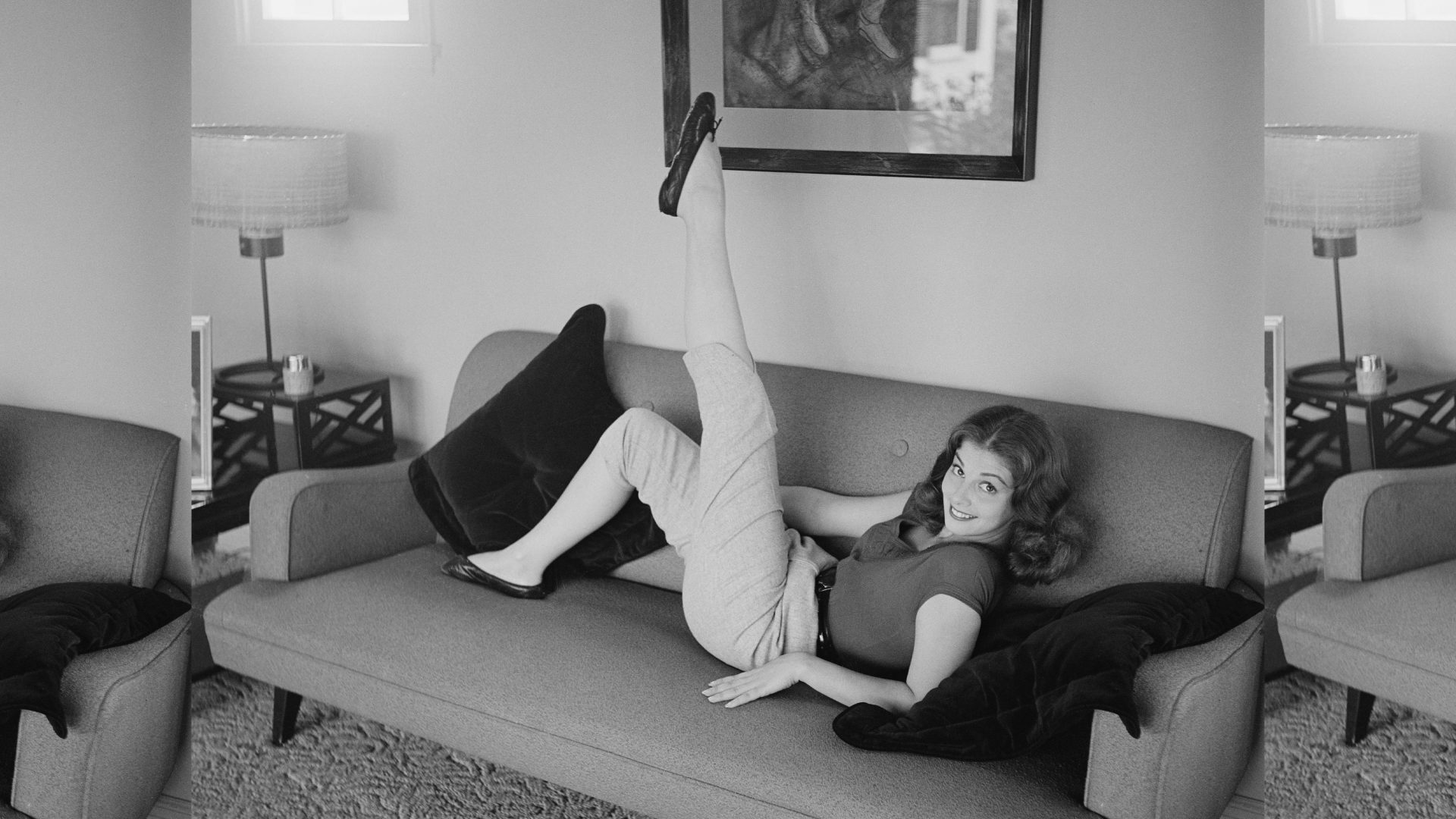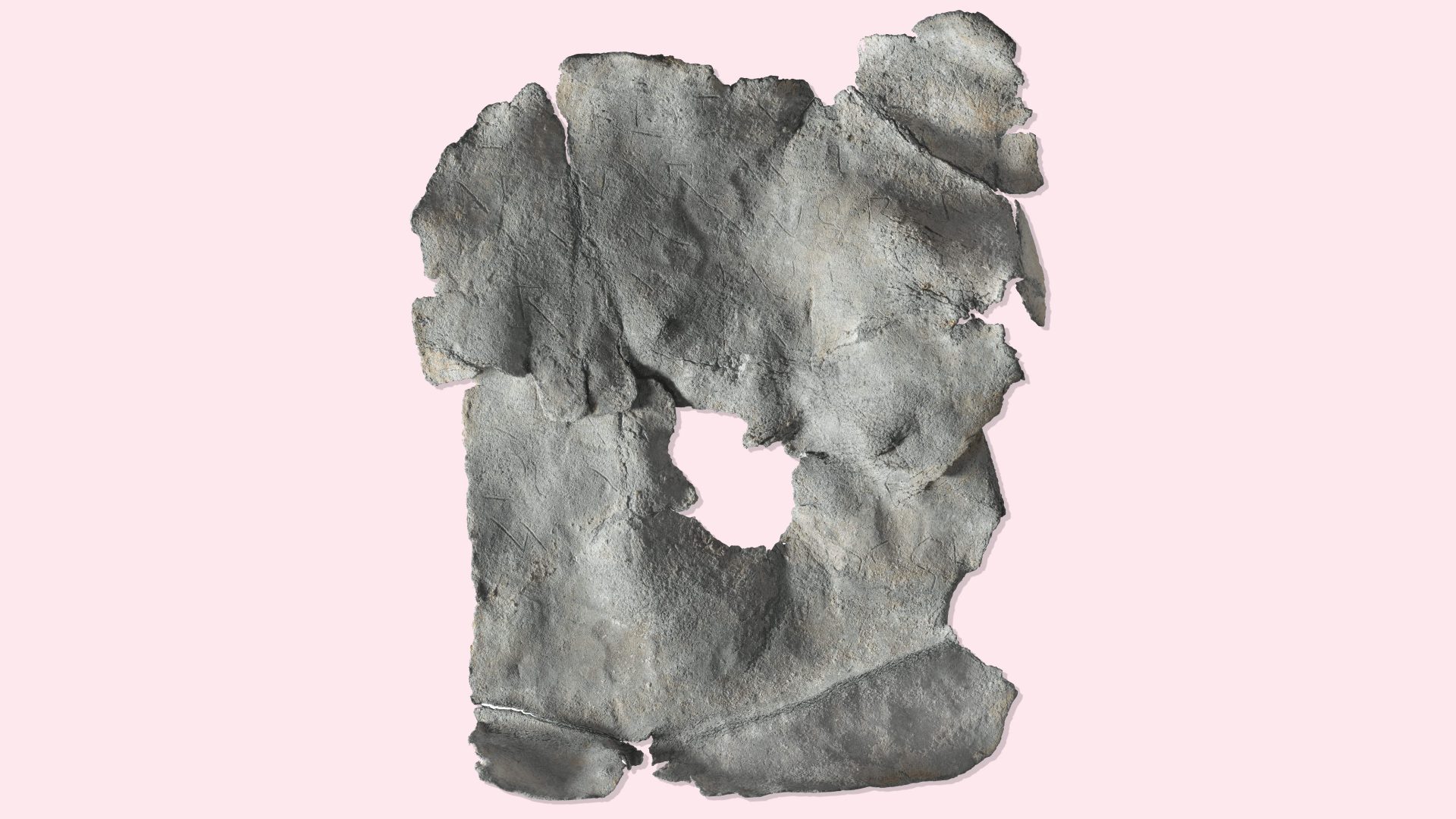One afternoon in the summer of 1946, the architect and engineer Luigi Pierangeli received a call about a leak in the top-floor apartment in a block
he’d built and still owned in an affluent suburb of Rome. He picked up his car keys and was about to leave when on a whim he called up to his 13-year-old daughter Anna Maria.
The flat that reported the leak was the best in the building. It was on the top floor, had 18 rooms, a fountain in the hallway and floor-to-ceiling windows offering views across the Eternal City. When the block was still empty, Anna Maria had loved that apartment in particular, dancing through the rooms and introducing goldfish to the fountain as a welcome gift for the tenant, a veteran silent film actress named Rina de Liguoro.
Anna was recovering from months spent bedridden with pleurisy and pneumonia and Luigi thought a run over to see the apartment she’d loved
would do her good. When they arrived, Luigi with his hat in his hand gushing apologies to his glamorous tenant, Anna looked at the fountain and demanded to know where the fish had gone.
“Oh, I got rid of them,” said the actress. “They’re bad luck.”
The teenager, cheeks flushed with anger and tears brimming, ran for the door, slammed it behind her and ran back to the car where it took considerable coaxing by de Liguoro to persuade her back up to the apartment for some strawberries. As the old screen actress watched her eat she became captivated by the demeanour of the pale, thin child with huge eyes sitting at her table, daintily picking up the fruit between thumb and
forefinger, still flashing dark looks at her as she popped them into her mouth.
A little over two years passed. One morning the telephone rang in the Pierangeli house and to the delight and mystification of her mother it was Rina de Liguoro inviting Anna to tea. The film director Leonard Moguy had
moved into the building and was searching for a young girl to play a leading role in his film Domani è troppo tardi (Tomorrow Is Too Late). De Liguoro had never forgotten Anna since their earlier encounter and suggested Moguy
meet her. Within minutes of arriving, Anna had the part.
As de Liguoro had suspected, Anna’s thin face and large eyes were perfect in front of the camera. But it was more than that. There was a stillness about her on screen, a calmness that belied her years that drew the viewer’s gaze
inexorably to her. It was a performance of maturity and grace that won Anna
the prestigious Nastro Argento award for Best Actress.
Her debut performance had been enough to win her the title role in Teresa, a Fred Zimmerman film released in 1951 in which John Ericson’s American soldier wins the heart of a young Italian woman during the war, marries her and takes her back to the US. Teresa’s dignity and that remarkable stillness when facing down adversity won Anna a Golden Globe, an MGM contract and a new life in the US.
Rarely can a life have been transformed so quickly and dramatically. Born in Cagliari, Sardinia, where her father was managing a land reclamation project, and raised in Rome, Anna and her twin sister Marisa, who also went on to be a screen actress, endured a strict upbringing with a heavy emphasis on religion. It was a sheltered childhood, during which the girls were allowed only a few, well-vetted friends. Then war came, its dangers and hardships affecting even the privileged Pierangelis, until Anna fell ill during
the winter of 1945-46 and her convalescence led to that life-changing meeting with an ageing film star.
It wasn’t a completely straightforward transition. While her mother Enrica had harboured youthful dreams of an acting career herself, Anna’s grandmother regarded the profession as something close to prostitution. Luigi was of a similar opinion, but was finally persuaded by the women of the house that this was a once-in-a-lifetime opportunity. When he died in the autumn of 1950 the Pierangeli women were free to leave Rome permanently for America.
The war-traumatised devout Christian from a sheltered background found Hollywood as exciting as it was bewildering. There were relationships with Kirk Douglas – who in his autobiography claimed the couple were briefly engaged – John Drew Barrymore, Eddie Fisher and, in 1954, with James Dean.
They met when he was filming East of Eden in a studio lot close to where the newly dubbed Pier Angeli was making The Silver Chalice. For a while they were inseparable, but according to Hollywood legend, when Dean returned Angeli home much later than anticipated one night and her mother snapped that such unchivalrous behaviour would be unacceptable in Rome, Dean’s cheeky reply of “Ma’am, when in Rome, do as the Romans do. When in Hollywood…” did not go down well.
Either way, within weeks Angeli was engaged to the Brooklyn-born Italian-American singer Vic Damone, with whom she would have a son, and there
were stories that Dean sat revving his motorcycle outside the church as the
wedding took place, racing off when the newlyweds emerged. After her
marriage had ended in 1958, Angeli said of Dean, who was killed in a car crash in 1955, “I loved Jimmy as I have loved no one else in my life but I could not give him the enormous amount that he needed. Loving Jimmy was something that could empty a person”.
Perhaps her best-known role was as the wife of Rocky Marciano, played by Paul Newman, in the 1956 film Somebody Up There Likes Me. She should have been playing opposite Dean, who had signed up for the film shortly before his death, and while her performance played to many of her strengths, Newman felt that she always had more to give the camera than most of her parts allowed.
“She was an extremely complex and gifted woman,” he said. “It was so unfortunate that the roles she was asked to play rarely demanded what I know she had to offer.”
Angeli spent most of the 1960s shuttling between Europe and the US, but at the dawn of the 1970s she settled in Beverly Hills. On the morning of September 10 1971 her housemate found the 39-year-old dead from an overdose of barbiturates. It’s never been entirely established whether it was suicide or she’d suffered a reaction to prescribed medication, meaning that
in death Angeli remains as enigmatic as she was in life.
There was far more to Anna Maria Pierangeli than what cinema-goers saw on the screen and friends saw off it. Her traditional upbringing masked a person far more nuanced and troubled than she ever appeared. The calmness displayed on camera was an escape from whatever traumatic wartime conditioning festered at the core of her being.
“When the scenes began, I changed completely. I was not Anna,” she recalled of her debut performance in Domani è troppo tardi. “Like when you
drink cold, cold water and feel it run like ice inside. In those moments I felt I
was another girl, not me.”




